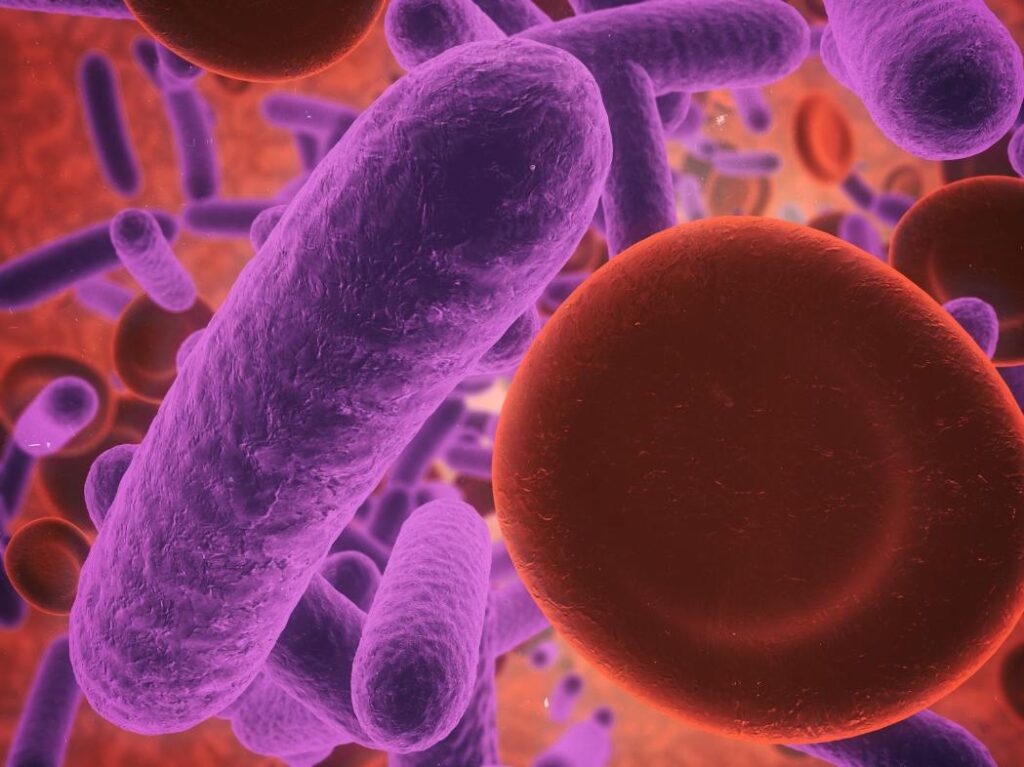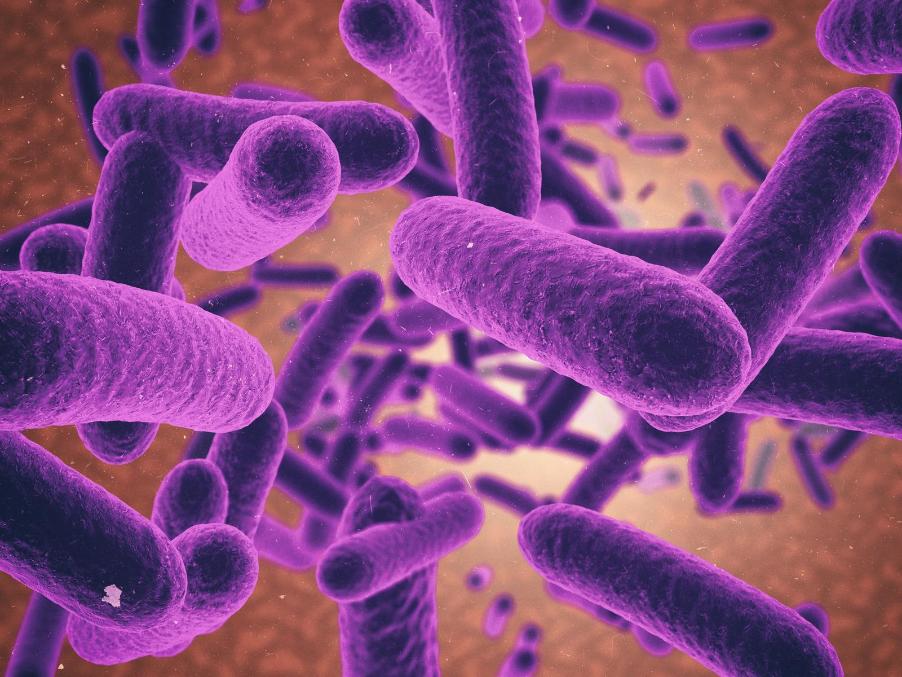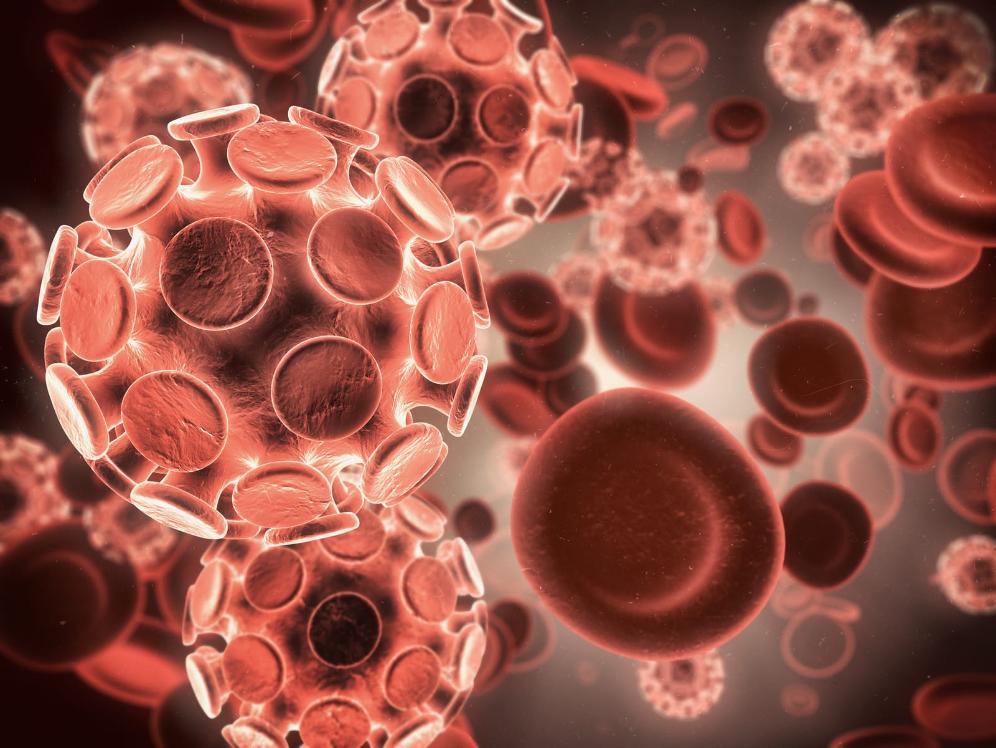Just a friendly heads-up! The information shared in this post is for general knowledge purposes only and should not be considered a substitute for professional medical advice. It’s crucial to talk to a healthcare professional before trying any new supplements. They can provide personalized guidance based on your unique needs and ensure they are safe for you. Remember, your health comes first, so consult with a qualified healthcare provider for the best advice tailored to you.
Table of Contents
Pyroluria, a term in mental health discussions, stirs a mix of interest and debate. It’s a concept you might have come across while searching for answers to mental health concerns.
Excessive production of pyrroles in the body leads to deficiencies in essential nutrients, according to theory. Various mental health symptoms, such as anxiety, mood instability, and depression, along with fatigue and cognitive issues, are associated with these deficiencies.
However, the acceptance of Pyroluria as a legitimate medical condition is a subject of ongoing debate in the medical community. It lies in a gray area, with some supporting its existence based on clinical observations and patient reports, while others demand more rigorous scientific evidence.
This post aims to dissect the concept of Pyroluria: What is it and what’s its background? We’ll explore, the arguments for and against its existence, and its current standing in the mental health field.

Understanding Pyroluria
From the 1950s until now, Pyroluria has stirred considerable controversy in both conventional and alternative medical circles.
It is also often referred to as Pyrole disorder (Pyrrole disorder and Pyrolle disorder), Pyrole disease (Pyrrole disease), Mauve factor, Kryptopyrroles, Pyrroles or Hydroxyhemophrrolin-2-one (HPL), Kryptopyroluria (Kryptopyrroluria) (KPU), Hemopyrrollactamuria (HPU) or Hemepyrole (Hemepyrrole, Hemopyrrole, Hemopyrole).
The main feature of Pyroluria is the impact it has on the metabolism of hemoglobin. Normally, the by-product of this process, hydroxyhemopyrrolin-2-one (HPL) or Pyrrole, is excreted uneventfully.
However, in individuals with Pyroluria, these pyrroles accumulate in the body, especially under stress, rather than being excreted. This buildup of pyrroles is theorized to bind strongly with zinc and vitamin B6, essential nutrients critical for the body and mind’s overall functioning. This binding makes them largely unavailable to the body, leading to deficiencies that can affect digestion, the immune system, hormonal balance, cognitive functioning, and emotional health.
Over time, the lack of available zinc leads to an imbalance with its partner, copper, in the body. This zinc/copper imbalance is believed to contribute to many of the symptoms associated with Pyroluria, such as anxiety, mood swings, depression, and behavioral issues.
Despite these theorized effects, many people suffering from Pyroluria may experience these symptoms for years, often without relief from various therapies or dietary changes, highlighting the need for further understanding and research into this condition.

Historical Origins and Evolution
The historical origins of Pyroluria date back to the 1950s, a period that saw the emergence of this concept in the medical field. Dr. Abram Hoffer, a notable figure in this discovery, identified the condition as an elevation in the levels of pyrroles in urine, a finding initially observed in individuals with schizophrenia and other severe mental health conditions. This discovery sparked a hypothesis linking these elevated pyrrole levels to abnormalities in hemoglobin metabolism, potentially contributing to various psychiatric disorders.
The 1960s, marked by the psychedelic revolution, brought further exploration into Pyroluria. Dr. Hoffer and his colleagues, intrigued by the similarities between the effects of LSD and schizophrenia, investigated the presence of biomarkers in the urine of individuals under the influence of LSD. Among these biomarkers, kryptopyrrole was identified, strengthening the hypothesis that its presence could be a factor in the development of mental and physical disturbances beyond schizophrenia.
Over time, the concept of Pyroluria has evolved. Initially associated with specific mental health conditions, it began to be recognized in relation to a broader spectrum of psychiatric issues.
Despite its historical roots, Pyroluria remains a subject of debate within the medical community, with ongoing discussions about its validity and the need for more rigorous scientific evidence.

Pyroluria’s Alleged Indicators
The symptoms and illnesses linked with pyrroluria are ambiguous and non-specific, often overlapping with more commonly diagnosed conditions; as a result, the condition is only recognized after other disorders have been ruled out, and there is no widely accepted Pyroluria definition.
Conditions Associated with Pyroluria:
- Anxiety: Often linked with Pyroluria, anxiety is a multifaceted mental health issue that can arise from environmental factors, genetic predisposition, or biochemical imbalances.
- Depression: Depression’s association with Pyroluria is based on the hypothesis that nutrient deficiencies, particularly in zinc and vitamin B6, can contribute to depressive symptoms.
- Schizophrenia: Some reports suggest a link between Pyroluria and schizophrenia, hypothesizing that pyrrole disorder may influence the onset or severity of schizophrenic symptoms.
- Attention Deficit Hyperactivity Disorder (ADHD): Pyroluria is sometimes suggested to be a contributing factor in ADHD, with the condition potentially affecting neurotransmitter balance.
- Autism Spectrum Disorder: The connection between Pyroluria and Autism Spectrum Disorder is drawn from the theory that metabolic imbalances might play a role in the development of autistic traits.
- Bipolar Disorder: In the context of Pyroluria, bipolar disorder is considered by some to be influenced by the same metabolic disturbances that affect mood regulation.
- Epilepsy: The potential link between epilepsy and Pyroluria is explored with the idea that metabolic imbalances could affect neurological function.
- Down’s Syndrome and Lyme Disease: These conditions are occasionally mentioned in discussions about Pyroluria, suggesting a broader impact of the disorder beyond psychiatric diagnoses.
Purported Symptoms of Pyroluria:
- Weakened immune system and frequent infections: These symptoms are thought to be indicative of zinc deficiency, a key aspect of Pyroluria’s impact on immune function.
- Cold hands and feet: Reported by some as a physiological manifestation of Pyroluria, potentially linked to metabolic imbalances.
- Frequent joint pain and poor appetite: These symptoms are commonly reported in Pyroluria, possibly reflecting broader nutritional deficiencies.
- Fatigue and brain fog: Often associated with Pyroluria, these symptoms may be related to the body’s impaired ability to utilize essential nutrients.
- Nausea and poor dream recall: These diverse symptoms are reported by some individuals with Pyroluria, suggesting a complex interaction of metabolic factors.
- Constipation and fungal infections (Candida): These symptoms are considered part of Pyroluria’s symptomatology, potentially linked to gut health and nutrient absorption issues.
- Poor tolerance to light and sound: Indicative of sensory sensitivities, these symptoms in Pyroluria might reflect underlying neurological imbalances.
- Migraines and headaches: Some suggest a link to Pyroluria, possibly due to nutrient imbalances affecting neurological health.
- Stretch marks: These are thought to indicate deficiencies in zinc and vitamin C, nutrients believed to be depleted in Pyroluria.
- White flecks in the fingernails: Often associated with nutritional deficiencies, these marks are sometimes reported in cases of Pyroluria.
- Irritability and short temper: These emotional responses are common and can be attributed to a range of psychological or environmental factors, including those present in Pyroluria.
- Poor short-term memory: This cognitive issue, potentially linked to Pyroluria, can be influenced by various neurological or psychological conditions.
- Moodiness: A broad and subjective symptom, moodiness is often reported in Pyroluria but is also common in the general population.
- Inability to handle stress: This claim, associated with Pyroluria, highlights the difficulty in quantifying stress response and its exclusive link to the condition.
- Inability to tan: This symptom, which could be related to genetic factors or skin type, is occasionally mentioned in the context of Pyroluria.
- Abnormal fat distribution: This symptom can be influenced by a variety of health conditions and is sometimes observed in Pyroluria.
- Sensitivity to light: Often associated with eye or neurological conditions, this symptom is also reported in Pyroluria.
- Intolerance of loud noises: Common in various sensory processing disorders, this symptom is sometimes reported by individuals with Pyroluria.
The exact correlation between these conditions and the Pyroluria syndrome is still up for question, given their general nature and their frequency in many other illnesses. So, be weary of self-diagnosing with the help of a Pyroluria symptoms checklist. More rigorous scientific validation is undoubtedly needed.

Biochemical Imbalances Attributed to Pyroluria
The theory of Pyroluria disease suggests that nutrient deficiencies lead to a range of biochemical imbalances in the body. However, a critical examination raises questions about the direct causality and specificity of these imbalances to Pyroluria.
- Copper Overload: Pyroluria is said to result in copper overload, which is linked to various mental health issues like anger, irritability, postpartum depression, bipolar disorder, ADHD, and autism. However, the direct correlation between copper levels and these specific conditions is complex and not exclusive to Pyroluria.
- Oxidative Stress: The condition is purported to cause an imbalance between free radicals and antioxidants, leading to oxidative stress. While oxidative stress is a known factor in various diseases, its specific link to Pyroluria is not well-established in scientific literature.
- Methyl/Folate Imbalances: These imbalances are said to affect genetic processes via methylation pathways. While methylation is crucial in many bodily functions, the assertion that Pyroluria directly causes such imbalances lacks robust scientific backing.
- Amino Acid Imbalances: The condition is claimed to lead to deficiencies in essential mood regulators like serotonin and dopamine. However, amino acid imbalances can be attributed to a variety of causes, not uniquely to Pyroluria.
- Heavy Metal Toxicity: Pyroluria is associated with an accumulation of heavy metals like copper and mercury. The theory suggests that these metals occupy bodily sites where zinc should be, but this hypothesis requires more empirical evidence for validation.
- Omega-6 Fatty Acids Need: It is claimed that individuals with Pyroluria have an increased need for omega-6 fatty acids, particularly arachidonic acid and GLA. While these fatty acids are essential, the specific increased need in Pyroluria is not conclusively proven.
The symptoms and conditions associated with Pyroluria are similar to those of many other disorders, and the biochemical imbalances mentioned may have multiple origins. Therefore, attributing them specifically to Pyroluria without more thorough scientific investigation may be premature, and self-medicating with the aid of Pyroluria supplements can be dangerous.
Although these biochemical imbalances are theoretically linked to Pyroluria, the evidence supporting these claims is not conclusive.

Diagnostic Challenges
The diagnosis typically involves a urine Pyroluria test at home, which is designed to detect the levels of pyrrole (hydroxyhemepyrrolin-2-one, HPL) in the urine. A significant elevation in HPL levels in the urine is thought to be indicative of the condition—from mild Pyroluria to more difficult cases. Typically, individuals have HPL levels below 10 mcg/dL in their urine.
The urine sample collected with a Pyroluria test kit must be handled with care due to the light and heat sensitivity of pyrroles. It’s usually collected and promptly frozen to preserve its integrity before being sent to the laboratory for analysis. This process is vital to ensure accurate measurement of pyrrole levels.
Besides the primary urinary pyrrole test, additional tests are often conducted to provide a more comprehensive view of the patient’s health. These include blood plasma zinc and serum copper tests, as well as ceruloplasmin testing. These tests are crucial for evaluating the balance of essential minerals and proteins in the body, which can be affected by Pyroluria.
Furthermore, Hair Tissue Mineral Analysis (HTMA) is sometimes used. HTMA offers insights into a patient’s adrenal and thyroid health, zinc and copper storage levels, and potential exposure to heavy metals. This analysis can provide valuable information for understanding the broader health implications associated with Pyroluria.
However, it’s important to note that the validity and interpretation of these tests, especially in diagnosing and ‘overcoming’ Pyroluria, are subjects of debate in the medical community. The lack of standardized diagnostic criteria and conclusive scientific evidence supporting Pyroluria as a distinct medical condition makes these testing practices controversial.

The Debate Around Pyroluria
Despite its long-standing presence in some health discussions, Pyroluria has not gained widespread recognition in mainstream medicine. Major medical institutions and psychiatric associations have not acknowledged Pyroluria as a distinct medical diagnosis, citing a lack of conclusive research and standard diagnostic criteria.
The symptoms attributed to Pyroluria are common across various psychiatric disorders, making it challenging to isolate Pyroluria as a unique condition. Many in the medical community argue that these symptoms can arise from a myriad of causes, and attributing them solely to Pyroluria is overly simplistic and potentially misleading.
The scientific studies conducted so far have not provided clear and consistent evidence supporting Pyroluria. Research in this area has been sparse, with many studies suffering from methodological limitations, such as small sample sizes, lack of control groups, and inconsistent diagnostic criteria. Pyroluria Pubmed searches or similar scholarly platforms can easily reveal this phenomenon. Moreover, some studies that have explored the link between high pyrrole levels and psychiatric symptoms have yielded mixed results, further muddying the waters.
The diagnostic methods used to identify Pyroluria have also been called into question. Critics argue that these tests lack standardization, and elevated pyrrole levels have not been conclusively proven to correlate with mental health disorders consistently. This lack of reliable diagnostic criteria and clear clinical guidelines contributes to the skepticism surrounding Pyroluria.

Lack of Consensus Among Medical Professionals
There is no consensus among medical professionals regarding Pyroluria. Some practitioners, particularly in the fields of alternative and nutritional medicine, recognize and treat Pyroluria, frequently sharing ‘Proluria success stories’. However, many general practitioners and psychiatrists in the larger medical community are still dubious.
This divide is primarily due to the absence of Pyroluria in major medical and psychiatric diagnostic manuals, such as the DSM (Diagnostic and Statistical Manual of Mental Disorders) and the ICD (International Classification of Diseases).
Pyroluria Real? Latest Research Findings
In recent times, a limited number of studies have provided new insights. Still, the research remains inconclusive and mixed in its findings.
Conducted in 2010, this study aimed to assess the effectiveness of targeted nutrient therapy alongside traditional medical treatments in a group of 567 patients with various mental illnesses. While the research approach was systematic, evaluating clinical outcomes over a 12-month period, it’s important to approach the results with caution.
The study reported a reduction in hospital admissions within the treatment group, which might suggest some benefits of nutrient therapy as an adjunct to standard mental health treatments. However, these findings should be interpreted carefully, considering the complexity of mental health disorders and the variability in individual responses to treatment. The study’s suggestion that integrating nutritional strategies with conventional treatments could improve patient outcomes is an interesting proposition, yet it requires further investigation and validation through more rigorous, controlled studies. The potential of nutrient therapy as a holistic approach in mental health care remains an open question, warranting cautious optimism rather than conclusive endorsement.
Griffith University conducted a study on Pyroluria, orthomolecular psychiatry, and their interconnections. The research delved into the role of micronutrients in managing violent and aggressive behaviors in male children and adolescents. The study was comprehensive, examining current prescribing patterns, the effectiveness of diagnostic tools, and patient outcomes following micronutrient therapy.
A significant aspect of the study was the use of the Children’s Aggression Scale, deemed reliable for measuring aggression in youth. While this finding is noteworthy, it’s crucial to maintain a skeptical view of the broader implications. The study suggests that micronutrient therapy could be an effective alternative to traditional pharmacological treatments for behavioral issues. However, the complexity of psychological and behavioral conditions, and the varied responses to treatments, call for a cautious interpretation of these results.
The suggestion that nutritional factors play a significant role in psychological and behavioral conditions is an area that certainly warrants further research, but it’s premature to consider micronutrient therapy as a definitive solution. While similar studies have been conducted in the last decade, more extensive, controlled research is needed to validate these findings and understand the true efficacy of micronutrient interventions in such complex conditions.
Hemopyrrollactamuria (HPU); from spots to pseudo-disease (2003):
The 2003 study critically examines Pyroluria (also known as Hemopyrrollactamuria, HPU). It revisits the historical context of this complex, known as the mauve spot, that has been controversial in schizophrenia research in the past century.
The study’s approach to reviewing all available data led to a significant conclusion: HPU should be considered a pseudo-disease, lacking substantial scientific evidence and validation. This stance challenges the medical legitimacy of HPU, advocating for a more skeptical and evidence-based approach to diagnosis and treatment. While this conclusion is notable, it’s essential to view it within the broader context of ongoing scientific debate and research limitations.
The study underscores the need for rigorous scientific scrutiny in the field of metabolic diseases, but it also highlights the complexities involved in reaching definitive conclusions in medical research.
Pyroluria: Fact or Fiction (Warren, Rucklidge, Sarris, Mulder, 2021):
The 2021 study “Pyroluria: Fact or Fiction” by Benjamin Warren et al. offers a critical and comprehensive review of Pyroluria. The study aimed to evaluate the scientific literature linking Pyroluria with psychiatric symptoms, assess the validity of hydroxyhemepyrrolin-2-one (HPL) testing, and explore the role of nutrients, particularly zinc and vitamin B6, in its treatment.
Using PRISMA guidelines, the researchers conducted a systematic review of electronic databases up to February 2020. They found that out of seventy-three articles identified, only three studies showed significantly higher HPL levels in psychiatric populations compared to controls, and there were no placebo-controlled treatment trials specifically addressing Pyroluria.
The study concluded that while elevated HPL is clinically observed, it remains a poorly researched biomarker with unclear associations with mental disorders. The authors recommend against using HPL testing as a screening or treatment tool until further research establishes specific clinical populations exhibiting elevated HPL, validates testing methods, and confirms the efficacy of high-dose zinc and B6 treatment for elevated pyrroles. This study significantly contributes to the ongoing discourse on Pyroluria, highlighting the need for more rigorous scientific investigation and validation.
This 2023 study titled “Pyrroles as a Potential Biomarker for Oxidative Stress Disorders” by Brett Lambert et al. provides a comprehensive analysis of the role of pyrroles in oxidative stress and their potential as biomarkers for psychiatric disorders such as schizophrenia. The study discusses the historical context of pyrroles and their discovery in with the help of a Pyroluria urine test associated with psychiatric disorders. It focuses on the reaction of p-N-dimethylaminobenzaldehyde (DMAB) with pyrrole moieties, a well-studied marker for oxidative stress dysregulation.
The research highlights the challenges in isolating pyrroles due to interference from other compounds like urobilinogen and emphasizes the need for standardized laboratory testing. The study concludes that while oxidative stress is well documented in schizophrenia, more research is needed to establish the efficacy of urinary pyrrole concentration as a non-invasive oxidative stress biomarker for improving diagnostic accuracy and treatment outcomes in psychiatric conditions.
This body of research on Pyroluria represents a critical shift in the medical community’s approach to understanding and treating this controversial condition. These studies, rather than providing conclusive evidence, highlight the complexities and gaps in the current understanding of Pyroluria, challenging long-held assumptions and opening new avenues for investigation.

Nutrition and Mental Health: A Critical Perspective
The established connection between nutrition and mental well-being is an area of increasing interest and research in the medical community. Nutritional psychiatry, a relatively new field, emphasizes the significant impact of diet and nutrition on mental health. This perspective holds regardless of the ongoing debate about the validity of specific conditions like Pyroluria.
- Role of Balanced Diets and Essential Nutrients: A balanced diet, rich in essential nutrients, plays a crucial role in maintaining and improving mental health. Vitamins, minerals, and antioxidants found in a variety of foods can directly and indirectly support brain functions. For instance, Omega-3 fatty acids, found in fish, are known for their role in cognitive processes and mood regulation. Similarly, deficiencies in vitamins such as B12, B6, and folate have been linked to depression and other mental health disorders.
- Evidence-Based Nutritional Interventions: It is essential to advocate for evidence-based nutritional interventions. This means relying on well-researched and scientifically proven dietary approaches rather than following unverified supplement protocols, such as those proposed for conditions like Pyroluria. This approach ensures that individuals receive the full spectrum of nutrients necessary for mental health, rather than focusing on isolated supplements that may lack comprehensive scientific backing.
- Critical Approach to Unverified Conditions: While the debate on conditions like Pyroluria continues, it is prudent to focus on overall nutritional well-being rather than specific, unverified supplement protocols. For individuals exploring their mental health options, it’s critical to consult healthcare professionals and consider established dietary guidelines that support mental health, rather than self-diagnosing and self-treating based on questionable sources.
In the absence of a miracle Pyroluria remedy, a well-balanced diet high in essential nutrients can still support mental health. This approach is consistent with the growing body of knowledge regarding the role nutrition plays in mental health and emphasizes the value of evidence-based practices in nutritional psychiatry.

Pyroluria Debunked: A Balanced Approach
Exercise caution as you explore Pyroluria. Research findings are inconsistent, which highlights the challenges to defining Pyroluria as a distinct medical condition.
In treating Pyroluria, functional medicine, which includes approaches by naturopaths and alternative health practitioners, often observes positive outcomes from micronutrient treatments. Yet, it’s important to recognize that these results are not universally applicable. This variability in response highlights the need for personalized medical advice. What is effective for one individual might be harmful for another, emphasizing the risks involved in self-diagnosing and self-treating with the ideal ‘Pyroluria vitamins’ based on unverified information.
The evolving discussion around Pyroluria not only reflects the complexities of mental health research but also emphasizes the need for methodologically sound studies. Future research should aim to provide clearer insights into the biochemical processes involved and evaluate the safety and efficacy of proposed treatments.
Consult a healthcare professional and do not begin a ‘Pyroluria treatment protocol’ without seeking medical advice, as high dosages of some micronutrients can upset your body’s balance.
Professionals can offer guidance based on the latest research, tailored to your health conditions and potential underlying factors. Additionally, focusing on overall nutrition and lifestyle is a prudent approach to mental health. Nutrients like zinc and vitamin B6, along with lifestyle factors such as stress management, adequate sleep, and physical activity, are fundamental to mental well-being.
In conclusion, as you navigate the complex area of Pyroluria, adopting a careful, informed approach is vital. Balancing open-minded investigation with skepticism and prioritizing evidence-based medical guidance will help you make informed decisions about this challenging aspect of mental health.

Frequently Asked Questions
What is Pyroluria disorder?

Pyroluria is a controversial condition hypothesized to involve excessive pyrroles in the body, byproducts of hemoglobin synthesis. It’s claimed to cause deficiencies in zinc and vitamin B6, leading to various mental health symptoms. However, its existence and clinical significance remain widely debated in the medical community.
Is Pyroluria real?
The reality of Pyroluria is a contentious topic, with no consensus in the mainstream medical community. While some alternative health practitioners recognize and treat it, major medical institutions question its validity. The lack of robust scientific evidence and recognition in standard medical diagnostics casts doubt on its existence.
Can Pyroluria be cured?

The notion of curing Pyroluria is speculative, as its medical legitimacy is not established. Treatments often suggested include zinc and vitamin B6 supplements, but their efficacy is not scientifically proven. The approach to ‘curing’ Pyroluria varies widely, reflecting the uncertainty surrounding the condition.
What causes Pyroluria?

The cause of Pyroluria is not clearly understood and remains speculative. It’s suggested to arise from genetic factors or stress, leading to increased pyrroles that bind with zinc and vitamin B6. However, this theory lacks substantial scientific backing and is not widely accepted in medical research.
How is Pyroluria diagnosed?

Pyroluria diagnosis often starts with a urine test to detect pyrrole levels, particularly hydroxyhemepyrrolin-2-one (HPL). Alongside this, additional tests like blood plasma zinc, serum copper, and ceruloplasmin levels, as well as Hair Tissue Mineral Analysis (HTMA), are frequently conducted for a more comprehensive health assessment. Despite these methods, the diagnosis of Pyroluria remains controversial due to questions about the tests’ reliability and lack of standardization in the medical community.
How common is Pyroluria?
The prevalence of Pyroluria is unclear and not well-documented in scientific literature. Claims of its commonality, especially among those with mental health disorders, come primarily from alternative health circles. The lack of scientific consensus and rigorous research makes its true prevalence uncertain.
The proposed relationship between Pyroluria and autism is based on the theory that nutrient deficiencies, particularly in zinc and vitamin B6, are common in both conditions. Some practitioners in alternative medicine hypothesize that these deficiencies might contribute to autistic symptoms. However, mainstream medical research has not established a direct link between Pyroluria and autism, and the theory remains speculative without robust scientific evidence to support it.
What is the relationship between Pyroluria and autism?
The proposed relationship between Pyroluria and autism is based on the theory that nutrient deficiencies, particularly in zinc and vitamin B6, are common in both conditions. Some practitioners in alternative medicine hypothesize that these deficiencies might contribute to autistic symptoms. However, mainstream medical research has not established a direct link between Pyroluria and autism, and the theory remains speculative without robust scientific evidence to support it.
What is the relationship between Pyroluria and schizophrenia?

Pyroluria has been historically linked to schizophrenia, with some suggesting it contributes to the disorder’s symptoms. This theory originated in the mid-20th century but has not gained acceptance in contemporary medical research. The claimed relationship between Pyroluria and schizophrenia lacks robust scientific validation.
Does Pyroluria cause depression?
Pyroluria is sometimes claimed to cause depression due to its alleged impact on nutrient levels, particularly zinc and vitamin B6. While some individuals have reported an improvement in depressive symptoms after taking micronutrients commonly recommended for Pyroluria, these experiences are anecdotal. However, depression is a complex condition with multifactorial causes, and attributing it solely to Pyroluria is overly simplistic. The scientific community does not widely recognize Pyroluria as a direct cause of depression.
Why does Pyroluria cause anxiety?

The belief that Pyroluria causes anxiety is based on the theory that it results in certain nutrient deficiencies, which are thought to impact mental health. However, anxiety is a multifaceted condition influenced by genetic, environmental, and psychological factors. The assertion of a direct causal relationship between Pyroluria and anxiety lacks substantial backing in mainstream medical research.
What are the most common causes of Pyroluria?
The most commonly cited causes of Pyroluria include genetic predisposition and stress-induced changes in hemoglobin synthesis. These factors are theorized to increase pyrrole production, leading to nutrient deficiencies. However, these claims are not widely accepted in the medical field.
Can you detect Pyroluria in urine?

Urine tests can measure pyrrole levels, such as hydroxyhemepyrrolin-2-one (HPL), which are often cited in Pyroluria diagnosis. However, the presence of elevated pyrroles in urine does not definitively confirm Pyroluria, as the condition itself is not universally recognized in the medical community. The interpretation of these test results and their clinical significance in diagnosing Pyroluria remains a subject of ongoing debate among medical professionals.
Is there a Pyroluria blood test?
There is no standardized blood test specifically for diagnosing Pyroluria. Some practitioners use blood tests to assess related factors like zinc and copper levels. However, these tests do not directly diagnose Pyroluria and their relevance to the condition is debated.
What foods should be avoided with Pyroluria?

There are no universally agreed-upon dietary guidelines for Pyroluria, as its existence and treatment protocols are still debated. However, it is common for those with suspected Pyroluria to be advised to avoid substances like caffeine, alcohol, and certain foods such as gluten, dairy products, and sugar. However, these recommendations are not based on solid scientific evidence and vary widely.
What is Pyroluria porphyria?
Pyroluria porphyria is a term sometimes used to describe a hypothesized link between Pyroluria and porphyria, a group of disorders affecting hemoglobin synthesis. Porphyria itself involves a variety of disorders that result from a buildup of natural chemicals producing porphyrin in the body, which can affect the skin, nervous system, and other organs. However, the connection between Pyroluria and porphyria is not recognized in mainstream medicine; the term reflects an outdated theory and lacks scientific support, with no substantial evidence to validate the proposed link between these two distinct conditions.
How to treat Pyroluria?

Treatment for Pyroluria often involves supplementation with zinc and vitamin B6, as suggested by some alternative health practitioners. However, the effectiveness of these treatments is not scientifically proven. Mainstream medicine generally does not endorse specific treatments for Pyroluria due to its questionable existence.
Can evening primrose oil help with Pyroluria?
Evening primrose oil is sometimes recommended by alternative practitioners for Pyroluria due to its content of gamma-linolenic acid (GLA), a fatty acid. GLA is believed to be beneficial for those with Pyroluria as its levels are often low in these individuals, and supplementing with GLA is thought to improve zinc absorption. However, there is no scientific evidence to support the effectiveness of evening primrose oil in treating Pyroluria. The recommendation is based more on theoretical considerations than on proven clinical efficacy.
Does Pyroluria cause weight gain?
The claim that Pyroluria causes weight gain is not supported by scientific evidence. Weight changes, including hormonal weight gain as seen in conditions like PCOS, PMS, and other menstrual irregularities, can have various causes. While some speculate a connection between Pyroluria and hormonal imbalances that might affect weight, this relationship remains speculative and unproven in medical research. The attribution of weight changes solely to Pyroluria lacks substantial scientific backing.
What is Pyroluria fatigue?
Pyroluria fatigue refers to the fatigue often reported as a symptom attributed to Pyroluria. However, fatigue is a common symptom in various conditions, including chronic fatigue syndrome, fibromyalgia, and depression, and can be easily misdiagnosed. If you are experiencing persistent fatigue, it is important to consult a doctor for a proper diagnosis, as the specific association between Pyroluria and fatigue is not supported by scientific evidence and could potentially mask other underlying health issues.
Is Pyroluria genetic?

The genetic aspect of Pyroluria is a topic of speculation among some alternative health practitioners. They suggest a hereditary component to the condition. However, the genetic basis of Pyroluria is not established in scientific research and remains a theoretical concept.
Sources
Warren BW, Sarris J, Mulder R, Rucklidge JJ. Pyroluria: Fact or Fiction? Journal of Alternative and Complementary Medicine. 2021;27(5):407-415. doi:https://doi.org/10.1089/acm.2020.0151
Lambert B, Semmler A, Beer C, Voisey J. Pyrroles as a Potential Biomarker for Oxidative Stress Disorders. International Journal of Molecular Sciences. 2023;24(3):2712-2712. doi:https://doi.org/10.3390/ijms24032712
Leech J. Is Pyroluria Real? An Unbiased Look at the Facts | Diet vs Disease. Diet vs Disease. Published February 27, 2018. Accessed December 24, 2023. https://www.dietvsdisease.org/is-pyroluria-real/
What is Pyroluria and can it be cured? – NCC. NCC. Published December 3, 2018. Accessed December 24, 2023. https://customcompounding.com.au/what-is-pyroluria-and-can-it-be-cured/
Pyroluria and Orthomolecular Psychiatry. Science-Based Medicine. Published February 29, 2012. Accessed December 24, 2023. https://sciencebasedmedicine.org/pyroluria-and-orthomolecular-psychiatry/
DoctorYourself.com – Urine Test for Psychosis. Doctoryourself.com. Published 2023. Accessed December 24, 2023. http://www.doctoryourself.com/hoffer_krypto.html
Royer A, Sharman T. Copper Toxicity. Nih.gov. Published March 27, 2023. Accessed December 24, 2023. https://www.ncbi.nlm.nih.gov/books/NBK557456/
Tarnacka B, Jopowicz A, Maślińska M. Copper, Iron, and Manganese Toxicity in Neuropsychiatric Conditions. International Journal of Molecular Sciences. 2021;22(15):7820-7820. doi:https://doi.org/10.3390/ijms22157820
Salim S. Oxidative Stress and Psychological Disorders. Current Neuropharmacology. 2014;12(2):140-147. doi:https://doi.org/10.2174/1570159×11666131120230309
Lu Z, Pu C, Zhang Y, et al. Oxidative Stress and Psychiatric Disorders: Evidence from the Bidirectional Mendelian Randomization Study. Antioxidants. 2022;11(7):1386-1386. doi:https://doi.org/10.3390/antiox11071386
Siu N, Xin L, Li X, et al. The potential use of folate and its derivatives in treating psychiatric disorders: A systematic review. Biomedicine & Pharmacotherapy. 2022;146:112541-112541. doi:https://doi.org/10.1016/j.biopha.2021.112541
Shelton RC, J. Sloan Manning, Barrentine LW, Tipa EV. Assessing Effects of -Methylfolate in Depression Management. The primary care companion for CNS disorders. 2013;15(4). doi:https://doi.org/10.4088/pcc.13m01520
Umeda K, Shindo D, Shinji Somekawa, et al. Effects of Five Amino Acids (Serine, Alanine, Glutamate, Aspartate, and Tyrosine) on Mental Health in Healthy Office Workers: A Randomized, Double-Blind, Placebo-Controlled Exploratory Trial. Nutrients. 2022;14(11):2357-2357. doi:https://doi.org/10.3390/nu14112357
Glenn JM, Madero EN, Bott N. Dietary Protein and Amino Acid Intake: Links to the Maintenance of Cognitive Health. Nutrients. 2019;11(6):1315-1315. doi:https://doi.org/10.3390/nu11061315
Kothapalli CR. Differential impact of heavy metals on neurotoxicity during development and in aging central nervous system. Current Opinion in Toxicology. 2021;26:33-38. doi:https://doi.org/10.1016/j.cotox.2021.04.003
Patterson E, Wall R, Fitzgerald GF, R. Paul Ross, Stanton C. Health Implications of High Dietary Omega-6 Polyunsaturated Fatty Acids. Journal of Nutrition and Metabolism. 2012;2012:1-16. doi:https://doi.org/10.1155/2012/539426
Berger M, Smesny S, Sw K, et al. Omega-6 to omega-3 polyunsaturated fatty acid ratio and subsequent mood disorders in young people with at-risk mental states: a 7-year longitudinal study. Translational Psychiatry. 2017;7(8):e1220-e1220. doi:https://doi.org/10.1038/tp.2017.190
Jiang C, Haiyan Yé, Cui L, Pai P, Wang G. Relationship of serum copper and zinc with kidney function and urinary albumin to creatinine ratio: Cross-sectional data from the NHANES 2011–2016. European Journal of Clinical Nutrition. 2022;76(12):1748-1754. doi:https://doi.org/10.1038/s41430-022-01181-8
Smith JC, Holbrook JT, Darla Erhard Danford. Analysis and evaluation of zinc and copper in human plasma and serum. Journal of The American College of Nutrition. 1985;4(6):627-638. doi:https://doi.org/10.1080/07315724.1985.10720105
Lu X, Li S, Zhang W, et al. Assessment of the diagnostic value of serum ceruloplasmin for Wilson’s disease in children. BMC Gastroenterology. 2022;22(1). doi:https://doi.org/10.1186/s12876-022-02186-0
Stuckey R, Walsh W, Lambert B. The Effectiveness of Targeted Nutrient Therapy in Treatment of Mental Illness. Journal of the Australasian College of Nutritional and Environmental Medicine. Published 2017. Accessed December 25, 2023. https://www.semanticscholar.org/paper/The-Effectiveness-of-Targeted-Nutrient-Therapy-in-Stuckey-Walsh/52d8729448e4d82e76f4cde04f3f45375c12fcd5
Hambly J. Biochemical Imbalances and Micronutrient Intervention in Violent and Aggressive Male Children and Adolescents. Published 2017. Accessed December 25, 2023. https://www.semanticscholar.org/paper/Biochemical-Imbalances-and-Micronutrient-in-Violent-Hambly/3b572200650cb8982250eac6bb00fc6acca202b1
van. [Hemopyrrollactamuria (HPU); from spots to pseudo-disease]. Nederlands tijdschrift voor geneeskunde. 2023;147(36). Accessed December 25, 2023. https://pubmed.ncbi.nlm.nih.gov/14520795/
Grajek M, Karolina Krupa‐Kotara, Agnieszka Białek-Dratwa, et al. Nutrition and mental health: A review of current knowledge about the impact of diet on mental health. Frontiers in Nutrition. 2022;9. doi:https://doi.org/10.3389/fnut.2022.943998
Eva Selhub MD. Nutritional psychiatry: Your brain on food – Harvard Health. Harvard Health. Published November 16, 2015. Accessed December 25, 2023. https://www.health.harvard.edu/blog/nutritional-psychiatry-your-brain-on-food-201511168626
Emmanuel N.P., Lydiard R.B., Reynolds R.D., et al. (1994). Plasma pyridoxal phosphate in anxiety disorders. Biol Psychiatry, 36:606–608.
Diet and mental health. Healthdirect.gov.au. Published December 15, 2023. Accessed December 25, 2023. https://www.healthdirect.gov.au/food-drink-and-mental-health
Copper Toxicity: A Common Cause of Psychiatric Symptoms. Psychology Today. Published 2017. Accessed December 24, 2023. https://www.psychologytoday.com/us/blog/holistic-psychiatry/201709/copper-toxicity-common-cause-psychiatric-symptoms
Scott T. (2014). How zinc and B6 prevent pyroluria and social anxiety. In: Schuler C. (Ed.), The Anxiety Summit.
Krinke G., Naylor D.C., Skorpil V. (1985). Pyridoxine megavitaminosis: An analysis of the early changes induced with massive doses of vitamin B6 in rat primary sensory neurons. J Neuropathol Exp Neurol, 44:117–129.
Schaeppi U., Krinke G. (1982). Pyridoxine neuropathy: Correlation of functional tests and neuropathology in beagle dogs treated with large doses of vitamin B6. Inflamm Res, 12:575–582.
Bendich A., Cohen M. (1990). Vitamin B6 safety issues. Ann N Y Acad Sci, 585:321–330.
National Institutes of Health. (2016). Vitamin B6. Dietary Supplement Fact Sheet. Online document at: https://ods.od.nih.gov/factsheets/VitaminB6-HealthProfessional/
National Institutes of Health. (2016). Zinc. Fact Sheet for Health Professionals.
Walker J. (1975). Neurological and behavioral toxicity of kryptopyrrole in the rat. Pharmacol Biochem Behav, 1975;3: 243–250.
Brodie M., Graham D., Thompson G., et al. (1976). The porphyrinogenic effects of kryptopyrrole in the rat and the occurrence of urinary kryptopyrrole in human hereditary hepatic porphyria. Clin Sci, 1976;50:431–434.
Wetterberg L., Formgren B. (1975). Pharmacological and biochemical properties of kryptopyrrole and its oxidation products possibly related to acute intermittent porphyria. Ann Clin Res, 1975;8:162–167.
Irvine D. (1978). Hydroxy-hemopyrrolenone, not kryptopyrrole, in the urine of schizophrenics and porphyrics. Clin Chem, 1978;24:2069–2070.
Gendler P.L., Duhan H.A., Rapoport H. (1978). Hemopyrrole and kryptopyrrole are absent from the urine of schizophrenics and normal persons. Clin Chem, 1978;24:230–233.
Nutripath. (2017). Kryptopyrrole Urine Test-Dry Ice. Online document at: http://nutripath.com.au/product/mauve-factor-formerly-kryptopyrroles-spot-urine-test-code-4011/
Rao B., Narayanan H., Reddy G. (1971). Investigations on urinary excretion of 3, 4 dimethoxyphenylethylamine (the pink spot), the Mauve factor and aromatic compounds in patients with schizophrenia. Indian J Med Res, 1971;59:455.
Irvine D.G. (1976). Autotransfer chromatography in the characterization of pyrroles. Chemistry of multiple-spot phenomena. J Chromatogr, 1976;123:69–78.
Somogyi I., Huszák I., Durkó I., Járdánházy T. (1981). [The effect of kryptopyrrole on the brain-activity of cats: A quantitative EEG-analysis (author’s transl)]. EEG EMG Z Elektroenzephalogr Elektromyogr Verwandte Geb, 1981; 12:212–215.
Cutler M., Graham D., Moore M. (1990). The mauve factor of porphyria, 3-Ethyl-5-hydroxy-4, 5-dimethyl-delta-3-pyrroline-2-one: Effects on behaviour of rats and mice. Pharmacol Toxicol, 1990;66:66–68.
Graham D.J., Thompson G., Moore M.R., et al. (1977). The Effect of 4-Ethyl-5-hydroxy-3, 5-dimethyl-D3-pyrrolin-2-one on Haem Metabolism in the Rat. Biochem Soc Trans, 1977;5: 1468–1470.
Sohler A., Holsztyn E., Pfeiffer C. (1974). Rapid screening test for pyroluria: Useful in distinguishing a schizophrenic sub-population. J Orthomol Psychiatry, 1974;3:273–279.
Mikirova N., Casciari J., Hunninghake R., Riordan N. (2012). The assessment of the energy metabolism in patients with chronic fatigue syndrome by serum fluorescence emission. Altern Ther Health Med, 2012;18:36.
McCabe D. (1983). Kryptopyrroles. J Orthomol Psychiatry, 1983; 12:2–18.
Mikirova N., Casciari J., Hunninghake R. (2013). The orthomolecular correction of metabolic imbalances found in attention deficit hyperactivity disorder: A retrospective analysis in an outpatient clinic. J Orthomol Med, 2013;28: 101–110.
Pfeiffer C. (1987). Nutrition and Mental Illness: An Orthomolecular Approach to Balancing Body Chemistry. Rochester: Healing Arts Press, 1987.
Durko I., Englehardt J., Szilard J. (1984). The effect of haemodialysis on the excretion of the mauve factor in schizophrenia. J Orthomolec Psychiatry, 1984;13:222–232.
Pfeiffer C., Jenney E. (1974). Fingernail white spots: Possible zinc deficiency. J Am Med Assoc, 1974;228:157.
Jackson J.A., Braud M., Neathery S. (2010). Urine pyrroles and other orthomolecular tests in patients with ADD/ADHD. J Orthomol Med, 2010;25:39.
Talty C., Dahlitz M. (2013). Pyrrole disorder for therapists. Online document at: www.neuropsychotherapist.com/pyrrole-disorder-for-therapists/
Walsh W. (n.d.). Commentary on nutritional treatment of mental disorders. Online document at: www.alternativementalhealth.com/commentary-on-nutritional-treatment-of-mental-disorders/
Graham D. (1978). Monopyrroles in Porphyria and Related Disorders. University of Glasgow, 1978.
Lightner D., Crandall D. (1973). The dye sensitized photo-oxygenation of kryptopyrrole. Experientia, 1973;29:262–264.
Gorchein A., Rogers A. (1979). The ‘mauve factor’ of schizophrenia and porphyria, 5-hydroxyhaemopyrrole lactam, has low pharmacological potency on guinea-pig ileum. Experientia, 1979;35:1078–1079.
Walsh W. (2017). Biobalance Outreach conference. Paper presented at: Biobalance, Gold Coast.
Hoffer A., Osmond H., Callbeck M., Kahan I. (1957). Treatment of schizophrenia with nicotinic acid and nicotinamide. J Clin Exp Psychopathol, 1957;18:131–158.
Heleniak E.P., Lamella S.W. (1986). A new prostaglandin disturbance syndrome in schizophrenia:delta 6 pyroluria. Med Hypothesis, 1986;19:333–338.
Pfeiffer C., Lamola S. (1983). Zinc and manganese in the schizophrenias. J Orthomol Psychiatry, 1983;14:28–48.
Irvine D. (1974). Kryptopyrrole and other monopyrroles in molecular neurobiology. Int Rev Neurobiol.




